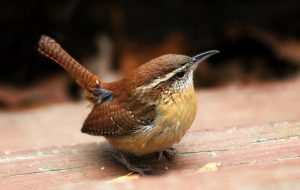I have a close bond with the wrens that visit my garden. I’m not sure if they realise it; I like to think that they do.
But, do wrens mate for life or are my regular visitors a new pairing each time?
Many birds remain monogamous during the breeding season but go their separate ways once the young have fledged.
Do wrens fall into this category or stay true to each other for life.

The male wren goes to a lot of work to woo his prospective mate. He builds multiple nests in a small vicinity, hoping that she will approve of one of them.
You might think that payment for his industry would be a mate for life. Sadly not.
For most of the year, the wren is a solitary bird that fiercely protects his territory. He confidently fights off other males but welcomes visits from female wrens; in fact, he actively encourages it. There is a distinctive change in the male’s song, signalling to the female that he is accepting company. It invites her to come and inspect the nest that he has begun constructing.
Once settled, the wren can lay between 5 and 8 eggs, and most seasons she will have two broods. It helps to redress the balance of a harsh winter when their population might decline by up to 25%.
Table of Contents
Are wrens monogamous?
Remember the multiple nests that the male built? It seems that he doesn’t want them all to go to waste. Male wrens often take a second mate within the same territory, and occasionally a third. At any given time, all three females might be incubating or hatching eggs.
One recorded case noted that a single male mated with 4 females simultaneously in the same territory!
Our friend the wren could father upwards of 30-birds each breeding season!
Why are wrens polygamous?
Wrens are tiny birds with rounded bodies; their shape makes them very susceptible to the cold. Harsh winters take their toll on the wren and ravage their population.
Their need to keep warm replaces their usual solitary nature. The best way for that to happen is to huddle together in bird boxes or cavities, much like penguins do.
These newly formed territories may have more than 30 birds snuggled together throughout the night, sometimes more.
Mating with multiple partners is the wrens way of keeping their numbers up, particularly when the previous winter has been devastating.
That is why the wren is the most common British garden bird, holding almost 8,000,000 territories.
Final thoughts
The gregarious yet unassuming wren has a dark side. Wrens do not mate for life; they can’t even manage seasonal monogamy.
They are polygamous birds, probably seeing it as their duty to keep their population thriving.
